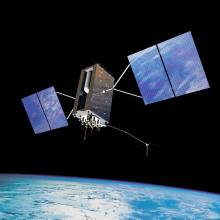
The European GNSS Supervisory Authority (GSA) has invited bids on an estimated €500,000 ($732,000), 18-month contract to evaluate and propose refinements in the Galileo signals to optimize the system’s prospects in a multi-system GNSS world.
The European GNSS Supervisory Authority (GSA) has invited bids on an estimated €500,000 ($732,000), 18-month contract to evaluate and propose refinements in the Galileo signals to optimize the system’s prospects in a multi-system GNSS world.
The invitation notes that that the “future global satellite navigation ‘environment’ will consist of co-existing multisystem, multifrequency capabilities with a number of regional augmentations” as well as end-user equipment with a variety of sensors or additional non-GNSS systems.
“In such a challenging GNSS environment accompanied by changes of user requirements, it is important to have a continuous evolution process of the Galileo system and related performance characteristic, so that the successes of Galileo in the future can be assured,” the proposal states. Analysis and development of signals evolutions will have to be closely coordinated with the European Space Agency and other European organizations involved in the Galileo program, according to the GSA request for proposals.
Study objectives include a performance evaluation of the current Galileo signal designs — spreading codes, navigation message — on E1, E5a, E5b and E6 frequencies compared to other GNSS systems, an analysis of specific codes characteristics (such as code length) that could be modified to improve the codes performance, and an assessment of the potential effects (costs or delays) on the system and users, if such changes are implemented.
The project will also examine the technical aspects of implementing a high-accuracy commercial service as well as potential next-generation Galileo signals. Proposals must be submitted to the GSA by March 13, with an opening of bids scheduled for March 25.
A draft Galileo Interface Control Document was issued on May 23, 2006, describing the proposed operational signal designs.






